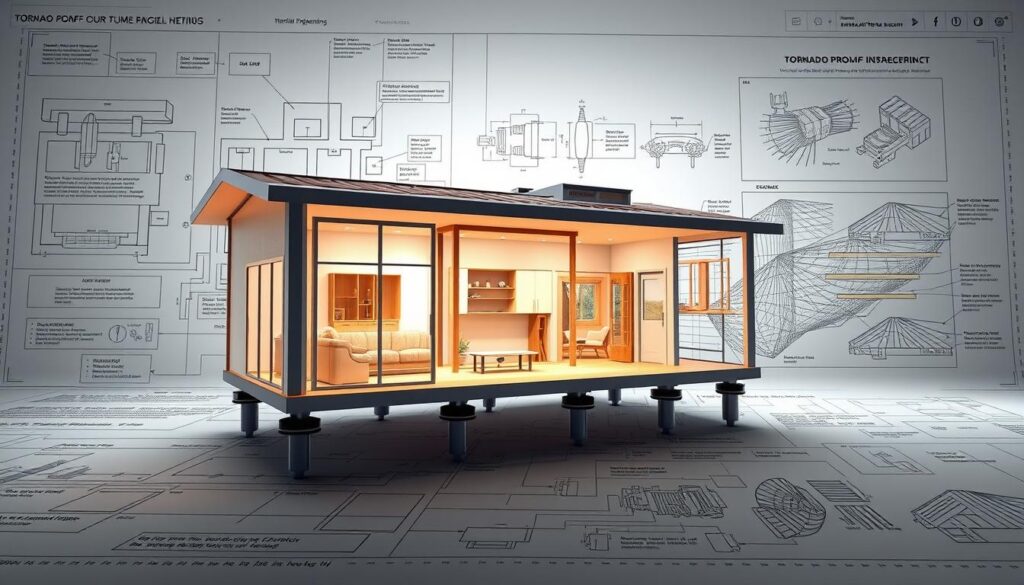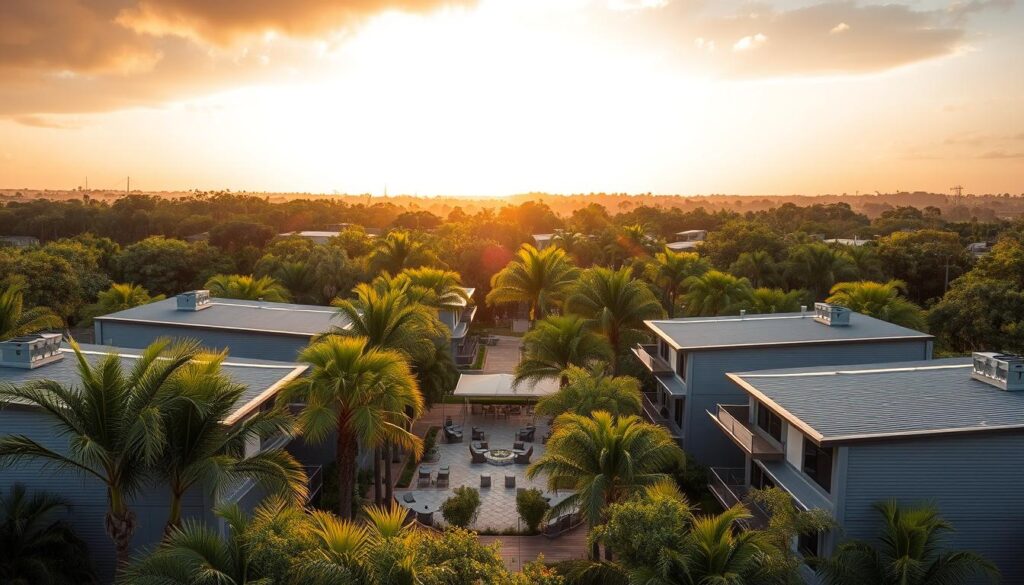The Australian landscape has always tested our resilience. We've seen everything from scorching bushfires to destructive cyclones. Tornado proof prefab homes are now a groundbreaking solution to protect families and rebuild communities faster and smarter.
Disaster resistant modular homes are more than just new construction ideas. They bring hope and practical engineering together. These advanced housing solutions are changing how Australians think about residential safety. They offer unmatched protection against extreme weather events.
Thanks to cutting-edge prefabrication, homes can now face incredible environmental pressures. Architects and engineers are creating structures that can withstand the storm. This gives residents in high-risk areas peace of mind.
Australia's climate is unique and tough, needing new housing designs. Disaster-resistant homes are key to keeping communities safe from extreme weather. Durable transportable homes are changing how we think about safety and resilience in our homes.
The world of extreme weather ready homes is changing fast. This is thanks to new engineering and materials. These homes are made to handle Australia's tough weather in different areas.
Modern disaster-resistant homes have important design features:
Australian building codes are getting stricter. This ensures durable transportable homes meet high safety standards. Manufacturers must follow detailed rules on structure, materials, and emergency readiness.
While disaster-resistant homes might cost more at first, the long-term savings are big. They need less maintenance, have lower insurance, and are more resilient. This makes them a smart choice for Australian homeowners.
Innovation in disaster-resistant housing is not just about protection—it's about creating sustainable, adaptable living spaces for challenging environments.

Australian engineers have changed the game in building homes. They've created tornado proof prefab homes that can handle extreme weather. These homes are a big step forward in design, using the latest materials and engineering.
Building these strong homes involves several key steps:
Universities and construction companies have worked together to improve these homes. Computational fluid dynamics and simulation help design how wind affects buildings.
| Design Feature | Wind Resistance Rating | Performance Metric |
|---|---|---|
| Aerodynamic Shell | Category 4 Winds | Up to 250 km/h |
| Reinforced Foundation | Deep Anchoring | Minimal Structural Displacement |
| Composite Materials | High Tensile Strength | 90% Impact Resistance |
These homes are incredibly strong, giving Australian families a safe place during bad weather. They show how smart design and strong engineering can make homes safer and more advanced.
Australia faces extreme weather, making personal safety a top priority. Modular storm shelters are a key innovation for family protection during disasters. These prefabricated cyclone bunkers mark a big step in emergency readiness and design.
Recent advancements in portable safe houses show incredible engineering skills. Designers have introduced new materials and smart tech for better protection.
Today's modular storm shelters use new materials for better strength:
Smart tech has turned these shelters into intelligent safety areas. They now offer full emergency monitoring and communication.
| Smart Technology Feature | Functionality |
|---|---|
| Early Warning Sensors | Real-time weather tracking |
| Communication Devices | Satellite and cellular connectivity |
| Environmental Controls | Temperature and air quality management |
Prefabricated cyclone bunkers now have essential survival features:
"Safety is no longer about survival, but about intelligent protection in the face of unpredictable natural events."
These advancements are a major leap in safety tech. They offer Australians strong and smart protection against extreme weather.

Australian communities are changing how we face disasters with new homes. Local councils and planners are working together. They aim to build neighbourhoods that can handle extreme weather.
Now, planning for communities includes cyclone-proof homes as a key part. These homes offer many advantages:
Councils in places like Queensland and the Northern Territory are focusing on these homes. They help build communities that can quickly recover from disasters. These homes can be built fast and moved when needed.
Smart tech and green materials make these homes even better. Planners are designing whole areas with adaptability and safety in mind.
Modular housing represents the future of Australian community resilience, transforming how we approach urban development and disaster management.
Australian communities are leading the way with cyclone-proof homes. They show the world how to build homes that are safe, yet look good and work well.
Australia's housing scene is changing fast, moving towards homes ready for extreme weather. Modular homes are key for communities facing tough environmental challenges. These homes are more than a trend; they're a smart way to keep people and property safe in risky areas.
Prefab technologies have changed how we see home safety in Australia. They use advanced engineering and smart materials to protect against bad weather. These homes are designed to keep families safe, even in disaster-prone areas.
The future of homes looks bright with modular housing leading the way. Research is making these homes even better at resisting disasters. Communities are seeing the value in building homes that can stand up to the weather.
As we move forward, embracing these new home solutions is key. Homeowners, planners, and leaders need to support homes that keep us safe. This way, we can reduce damage and feel secure, no matter the weather.


